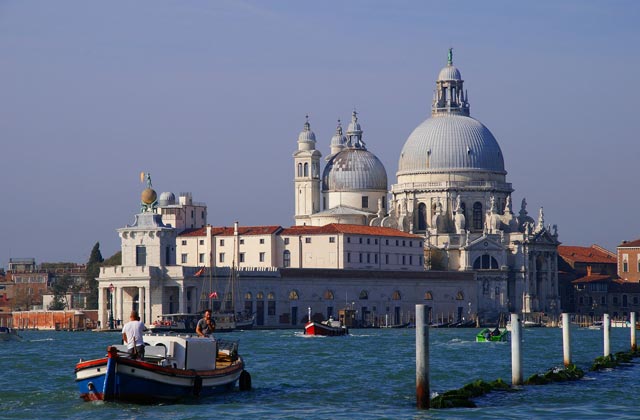Many art connoisseurs would coincide with the following premise: Venice is an open-air museum. I wanted to test the truthfulness of this statement with my own eyes, and applied to the 24th edition of the Course in Curatorial Practice and Contemporary Art (Corso in Pratiche Curatoriali e Art Contemporanee) organized by the Venice School for Curatorial Studies (XAC) that takes place every year in the city of Tintoretto. The course ran from October 2016 to May 2017, giving me just enough time to strengthen my language skills in Italian in the context of a strong academic program that also would guide me into the discovery of Venice. As the program neared its natural end, however, I felt in my heart the desire to prolong my stay. The Fondation Pinault has a double presence in Venice, that is, at Palazzo Grassi and Punta della Dogana, two beautiful venues that are dedicated to presenting François Pinault’s collection as tastefully curated exhibitions throughout the year. There was an opening for a museum educator and I submitted my application. Their decision was favorable to my hopeful expectations and so, starting in April 2017, I joined the Fondation Pinault’s Venetian team. Museum education was a novel concept for me for, so far, I had focused on the curatorial role of a museum. My new responsibility would literally open me the doors to a new aspect of a museum’s mission: that of helping to educate its public into the understanding of art and its history.
My first mission was to prepare a guided tour of the upcoming exhibition Treasures from the Wreck of the Unbelievable by Damien Hirst. This show was to be featured during the 2017 Venice Biennale Viva Arte Viva and would be on view from April 9th to December 3rd 2017. I was asked to design a comprehensive guide that could be easily adapted to different publics, that is, readily available for both private and group visits in different languages. Also, as the exhibition was shown at both Palazzo Grassi and Punta della Dogana, I had to create a guided tour that would satisfy visitors who would have the time to visit both venues in the same day or simply one of them. Museum educators were given a week to prepare their guides. I used this time wisely, visiting both venues several times and spending long hours at the exhibition spaces. I remember writing down keywords that came to mind, potential questions from the audience, different points of contrast between the artworks on display… I filled out an entire notebook. I complemented this empirical approach with both online and library research. The intensity of that week was soon transformed into pure excitement. I felt ready and confident with my guide and could not wait to share it with the visitors. My very first series of guided tours took place during the opening evening and both my public and museum supervisors rated them as a success.
Soon thereafter, as news of the exhibition expanded and brought visitors of the Venice Biennale, my work calendar began getting more solicited. I led guided tours in English, French, Spanish and Italian, and my supervisors became increasingly pleased at the positive feedback they regularly received from visitors whom I had welcomed. My steadfast gaining of a reputation led my supervisors to assign me more private tours, especially those for VIP visitors. For instance, one morning I led Vera Wang and her companion through the exhibition, as well as Giorgio Armani, who asked his entourage to stay behind so that I may walk beside him and explain the artworks. The end of this visit was most rewarding for he affectionately thanked me with a kiss on each cheek. Moments like these were plenty and each time gave me a renewed sense of purpose. Other celebrities, renowned journalists, VIP guests of François Pinault, and foreign dignitaries wishing to visit Palazzo Grassi or Punta della Dogana were assigned to me. I always finished my guided tour in the same way for everyone, with a quote from Jorge Luis Borges: “We accept reality so readily – perhaps because we sense that nothing is real.” I could not help it as someone who has always held close ties with literature. And every time I read this quote out loud, every time I saw the wide eyes and pensive smiles delineate over the faces of my audience.
I would continue at Fondation Pinault for two other exhibitions: Albert Oehlen: Cows by the Water at Palazzo Grassi (from April 8, 2018 to January 6, 2019) and the collective exhibition Dancing with Myself at Punta della Dogana (from April 7th to December 16th 2018). While I equally enjoyed designing and leading those guided tours for a VIP audience, I must admit that, still today, Treasures from the Wreck of the Unbelievable occupies a special place in my heart’s affection. I recall that, back in the week leading to the exhibition opening, our supervisors told museum educators that they had carte blanche to design a guided tour that would either inform that visitor from the head start of Damien Hirst’s fiction or, more challenging perhaps, a guided tour that would make people believe – or at least start to believe – that what Hirst told throughout the exhibition was actually true. I went for the latter. And it became like fiction writing for me.
